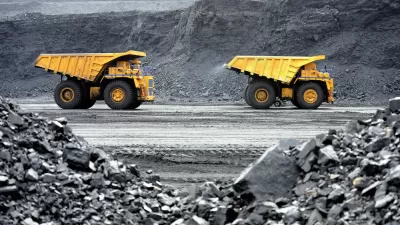In this Sunday Review editorial, The New York Times applauds China's announcement that it will ban coal burning in the Beijing region by 2020, but warns that some solutions to air pollution will exacerbate climate change.
China is by far the world's largest coal consumer. Last year it "consume(d) nearly as much coal as the rest of the world combined," reported NRDC's Alvin Lin in May, 2013. Thus, The New York Times editors were heartened to learn "that the government would ban the use of coal in Beijing and other urban areas by 2020 in an effort to reduce the noxious air pollution that chokes many cities." Not only will the prohibition be good for Beijing air breathers but for the warming planet as well.
"Motor vehicles, coal burning, industrial production and dust account for 31.1 percent, 22.4 percent, 18.1 percent and 14.3 percent of Beijing's PM 2.5 respectively. These airborne particles smaller than 2.5 microns in diameter are blamed for Beijing's smog," according to Xinhua.
However, the solution—burning more natural gas, has its own perils, warns The Times, because of a "particularly misguided plan (that) would involve building 50 large industrial facilities in western China to convert coal into synthetic natural gas." [Also see a description of the plan in a Quartz post here].
"It’s thus welcome news when President Xi Jinping says that reducing pollution will be a priority for his administration," they write. "But the process of converting coal to gas would increase the country’s total carbon emissions and consume huge amounts of water in what are already arid regions."
An alternative to synthetic natural gas should be shale gas, suggest the editors, as well renewable and nuclear power.
The country can also do more to tap into shale gas in a prudent way. By some estimates, China’s shale reserves could be nearly twice as big as American reserves. China will also need to invest more in renewable energy sources and nuclear power to meet the needs of its large and increasingly urban population.
FULL STORY: China Confronts Its Coal Problem

Alabama: Trump Terminates Settlements for Black Communities Harmed By Raw Sewage
Trump deemed the landmark civil rights agreement “illegal DEI and environmental justice policy.”

Study: Maui’s Plan to Convert Vacation Rentals to Long-Term Housing Could Cause Nearly $1 Billion Economic Loss
The plan would reduce visitor accommodation by 25% resulting in 1,900 jobs lost.

Planetizen Federal Action Tracker
A weekly monitor of how Trump’s orders and actions are impacting planners and planning in America.

Wind Energy on the Rise Despite Federal Policy Reversal
The Trump administration is revoking federal support for renewable energy, but demand for new projects continues unabated.

Passengers Flock to Caltrain After Electrification
The new electric trains are running faster and more reliably, leading to strong ridership growth on the Bay Area rail system.

Texas Churches Rally Behind ‘Yes in God’s Back Yard’ Legislation
Religious leaders want the state to reduce zoning regulations to streamline leasing church-owned land to housing developers.
Urban Design for Planners 1: Software Tools
This six-course series explores essential urban design concepts using open source software and equips planners with the tools they need to participate fully in the urban design process.
Planning for Universal Design
Learn the tools for implementing Universal Design in planning regulations.
Caltrans
Smith Gee Studio
Institute for Housing and Urban Development Studies (IHS)
City of Grandview
Harvard GSD Executive Education
Toledo-Lucas County Plan Commissions
Salt Lake City
NYU Wagner Graduate School of Public Service




























